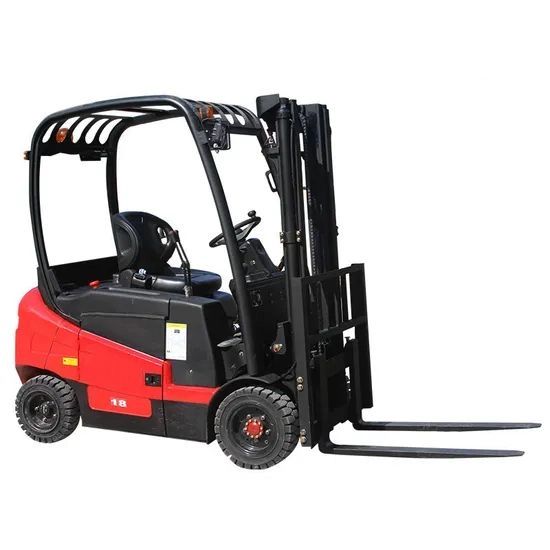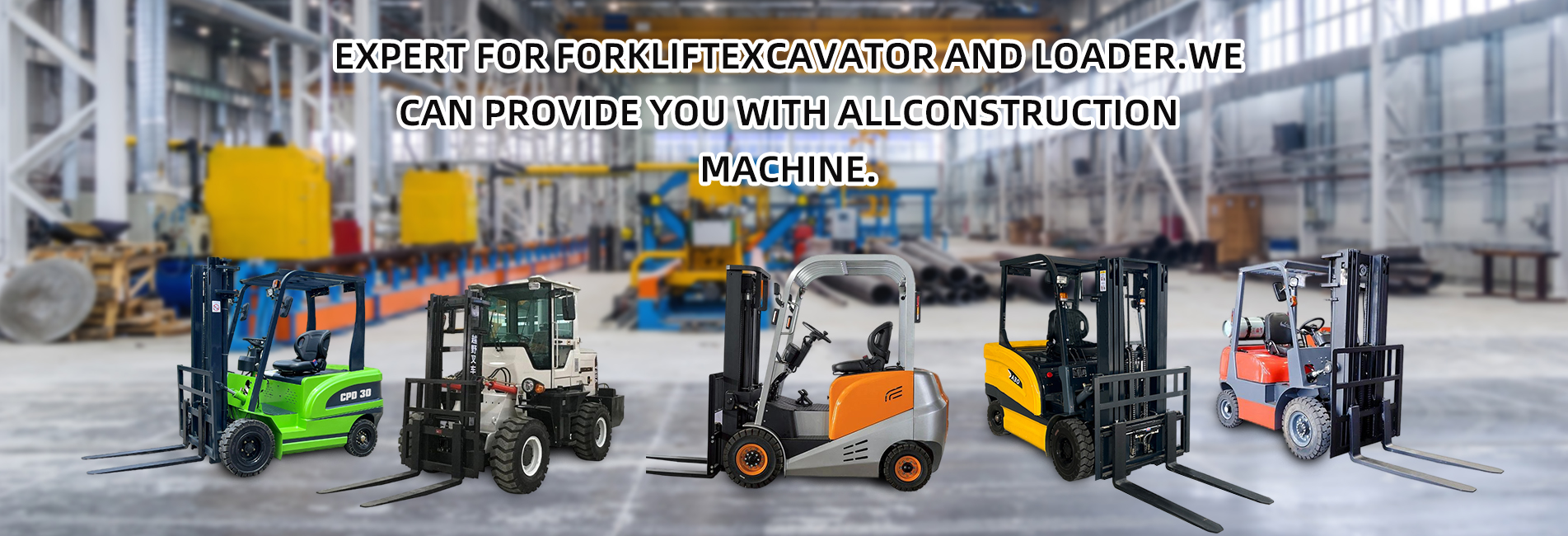Guide to Selecting Batteries for Electric Forklifts: Choose the Right One, Not Just the Expensive One
The operational efficiency and operating costs of electric forklifts are directly linked to battery performance. Selecting the right battery can extend equipment lifespan by 50% and reduce total costs by 45% over 5 years. However, blindly pursuing "high-end lithium-ion batteries" or "low-cost lead-acid batteries" may lead to problems. The core lies in identifying the solution that best matches your needs based on three key dimensions: operation scenarios, environmental conditions, and cost cycles.

Step 1: First, Calculate the "Operation Intensity" to Rule Out Mismatched Options
Operation intensity is the "primary filter" for battery selection, as it directly determines the battery’s endurance, charging frequency, and lifespan. Two core indicators must be clarified first:1. Single Load and Operation Frequency
- Light load & low frequency (single load ≤ 2 tons, daily handling ≤ 50 times): For scenarios like small warehouses or retail stores moving pallets, lead-acid batteries are sufficient. Their initial cost is 30%-50% lower than lithium-ion batteries, and their stable discharge characteristics are suitable for simple working conditions—there’s no need to pay the "performance premium" for lithium-ion batteries.
- Heavy load & high frequency (single load ≥ 3 tons, daily handling ≥ 100 times): For scenarios like ports or logistics hubs transferring containers, lithium-ion batteries are a must. Lithium-ion batteries have a cycle life of 1,500-2,000 cycles (compared to only 300-500 cycles for lead-acid batteries). Under high-intensity daily operations, lithium-ion batteries don’t need replacement for 5 years, while lead-acid batteries require 2-3 replacements—making lead-acid batteries more costly in the long run.
2. Daily Operation Duration and Shifts
- Single shift & short duration (daily operation ≤ 6 hours, daytime only): Lead-acid batteries can meet the next day’s needs with 6-8 hours of overnight charging, eliminating the need for backup batteries. This is ideal for small and medium-sized enterprises with a "9-to-5" operation rhythm.
- Multiple shifts & long duration (daily operation ≥ 8 hours, two-shift or 24-hour operation): Lithium-ion batteries are the only option. They support 2C-3C fast charging (reaching 80% charge in 1.5 hours), allowing recharging during lunch breaks or shift changes. There’s no need to purchase additional backup battery packs, avoiding the efficiency waste of lead-acid batteries—"8 hours of charging for only 6 hours of operation".
Step 2: Next, Evaluate "Environmental Adaptability" to Avoid Performance Loss
Different environments have vastly different requirements for the battery’s temperature resistance, corrosion resistance, and cleanliness. Choosing the wrong battery can drastically shorten its lifespan and even cause safety hazards.1. Temperature: Lithium-Ion for Low Temperatures, Lead-Acid Preferred for High Temperatures
- Low-temperature environments (≤ -10°C, e.g., cold chain warehouses, outdoor winter in northern regions): Lead-acid batteries lose over 50% of their capacity at -20°C and may even fail to start. In contrast, lithium iron phosphate batteries can retain 80% of their capacity. Some models with self-heating functions can raise the battery temperature from -20°C to 5°C within 1 hour, making them fully suitable for fresh food and pharmaceutical cold chain operations.
- High-temperature environments (≥ 35°C, e.g., construction sites, outdoor summer operations): Lithium-ion batteries require forced liquid cooling at temperatures above 40°C (increasing costs by 15%), otherwise their lifespan will shorten by 20%. Lead-acid batteries only experience 10%-15% capacity loss at high temperatures, and their electrolyte can be replenished with water after evaporation. With better temperature resistance, lead-acid batteries are suitable for harsh environments with high dust and temperatures.
2. Cleanliness and Corrosiveness: Lithium-Ion for High Cleanliness, Lead-Acid for High Pollution
- High-cleanliness environments (e.g., electronics factories, food/pharmaceutical workshops): Lithium-ion batteries feature a sealed design with no acid mist emission or electrolyte leakage, complying with GMP (Good Manufacturing Practice) standards and the dust-free requirements of the electronics industry. This avoids the risk of lead-acid batteries’ acid mist corroding equipment and contaminating products.
- High-pollution environments (e.g., wood factories, fertilizer warehouses): Lead-acid batteries have casings made of corrosion-resistant polypropylene, which can resist erosion from dust and chemical volatile substances. While lithium-ion batteries are also corrosion-resistant, their high maintenance costs (thousands of yuan for casing damage repairs) make them less "durable" than lead-acid batteries. Lithium-ion batteries are more suitable for environment-friendly scenarios.
Step 3: Finally, Calculate "Total Lifecycle Cost"—Don’t Be Misled by Initial Prices
Many people only focus on the "initial purchase price", thinking that lead-acid batteries (around 8,000 yuan) are cheaper than lithium-ion batteries (around 12,000 yuan). However, they overlook the 5-year Total Cost of Ownership (TCO)—lithium-ion batteries actually save 45% over this period. The key is to calculate three cost components clearly:| Cost Type | Lead-Acid Battery (48V/600Ah) | Lithium-Ion Battery (48V/600Ah) | Core Difference |
|---|
| Initial Cost | 8,000 yuan | 12,000 yuan | Lithium-ion costs 4,000 yuan more |
| Annual Maintenance Cost | 800 yuan (water refilling, balanced charging) | 0 yuan (maintenance-free) | Lithium-ion saves 4,000 yuan over 5 years |
| 5-Year Replacement Cost | 16,000 yuan (2 replacements) | 0 yuan (no replacement needed) | Lithium-ion saves 16,000 yuan |
| Total 5-Year Investment | 22,000 yuan | 12,000 yuan | Lithium-ion has 45% lower total cost |
- Short-term use (≤ 2 years, e.g., temporary leases, seasonal warehouses): Choose lead-acid batteries. The annual depreciation cost is only 2,000 yuan, which is more cost-effective than lithium-ion batteries (3,000 yuan/year). Additionally, there’s no need to bear the "residual value loss" of lithium-ion batteries when they are scrapped after use.
- Long-term use (≥ 5 years, e.g., owned warehouses, fixed production lines): Lithium-ion batteries are a must. Although you spend an extra 4,000 yuan upfront, the total 5-year investment is 10,000 yuan less. Moreover, intelligent features (e.g., BMS systems optimizing charging) can further reduce downtime costs.
Step 4: Typical Scenario Selection Table—Find Your Match Directly
| Actual Demand Scenario | Recommended Battery Type | Core Reason |
|---|
| Small supermarket warehouse, single-shift pallet handling (≤ 2 tons) | Lead-Acid Battery | Low initial cost; overnight charging meets next day’s needs |
| E-commerce logistics hub, 24-hour sorting (≥ 3 tons) | Lithium-Ion Battery | Fast charging supports multiple shifts; no replacement needed for 5 years; lower TCO |
| Fresh cold chain warehouse (-18°C), 24-hour operation | Lithium-Ion Battery | Minimal capacity loss at low temperatures; self-heating ensures startup |
| Construction site, outdoor building material transportation in summer | Lead-Acid Battery | High temperature/dust resistance; low maintenance cost; durable for harsh use |
| Pharmaceutical GMP workshop, dust-free handling | Lithium-Ion Battery | No acid mist emission; meets cleanliness standards; avoids product contamination |
Step 5: Pitfall Avoidance Guide—3 Common Misconceptions
- Misconception 1: "Lithium-ion batteries are definitely better than lead-acid batteries"For scenarios with low workloads or high-temperature, dusty environments, the high price and heat sensitivity of lithium-ion batteries become "burdens", while lead-acid batteries are more practical.
- Misconception 2: "Only focus on initial price, ignore maintenance"The annual maintenance cost of lead-acid batteries accounts for 10% of their total price. Over 5 years, maintenance fees can buy 2 more sets of new lead-acid batteries—making them less cost-effective for long-term use.
- Misconception 3: "Overlook charging conditions"If the warehouse lacks fast-charging sockets (required for lithium-ion batteries), forcing the use of lithium-ion batteries will result in "having batteries but no way to charge them", which instead disrupts operations.
Summary
There is no "absolutely optimal solution" for electric forklift battery selection—only the "most suitable one". Choose lead-acid batteries for single-shift, light-load, short-term use, or high-temperature, dusty environments. Choose lithium-ion batteries for multi-shift, heavy-load, long-term use, or low-temperature, high-cleanliness environments. The key is to first clarify your own "operation intensity, environment, and usage cycle", then compare costs and performance to select a battery that "works smoothly and offers good value for money".



